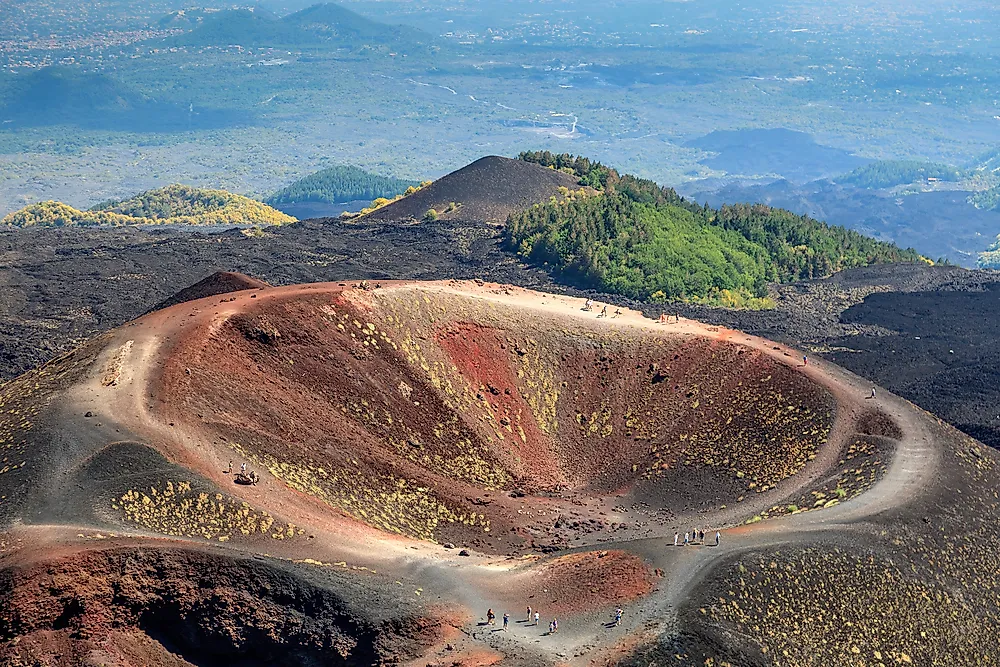Are There Any Active Volcanoes in Europe?

Geologists define volcanoes as a break in the Earth's crust through which materials such as lava and hot gases from magma chambers deep below the surface are released. According to the Global Volcanism Program (GVP), a volcano is only considered active if it has erupted within the past 10,000 years. Geologists estimate that there are at least 500 active volcanoes around the world, and nearly 50 of them erupt each year. Europe has a significant number of active volcanoes that have significantly impacted the landscape of the continent. Some of the active volcanoes in Europe are located in Italy, Iceland, Romania, Norway, and Portugal.
Italy
Some of the most well-known active volcanoes in Europe can be found in Italy, such as Mount Etna, which is located in Sicily, and the Stromboli, which is situated on the Aeolian Islands. Mount Etna is also renowned since it is Europe's tallest active volcano that is not within the Caucasus region. Geologists consider Mount Etna to be among Earth's most active volcanoes due to the frequent volcanic activity around the mountain. Mount Etna is also unique since it ejected smoke rings in the 1970s. Another well-known active volcano in Italy is Mount Vesuvius, which is approximately 4,200 feet tall. The mountain is situated along the Gulf of Naples and is part of the Campanian volcanic arc, and is known for destroying the Italian city of Pompeii after a massive eruption in 79 AD. In addition to Pompeii, other towns that were affected included Oplontis and Herculaneum.
Iceland
Iceland has a significant number of active volcanoes, such as Öræfajökull, Katla, and Snæfellsjökull. Öræfajökull is unique since it is entirely covered in ice. It is also Iceland's largest active volcano and has a height of approximately 6,920 feet. The volcano is situated in the southeastern region of Iceland, within Vatnajökull National Park. Katla is located in the southern part of the country and is considered one of Iceland's most active volcanoes since it was the site of 20 documented eruptions between 930 AD and 1918 AD. Snæfellsjökull is another of Iceland's most famous volcanoes and is situated in the western region of the country. Geological evidence indicates that the latest eruption of Snæfellsjökull occurred in 200 CE. There are several other volcanoes are located in Iceland, such as Eyjafjallajökull and Hekla, both of which can be found in the southern section of the country. During the Middle Ages, Hekla was often referred to it as the "Gateway to Hell" due to the frequency of its volcanic activity.
Romania
Romania has several active volcanoes, the two most notable being Ciomadul and Racoș. Ciomadul is situated in the Carpathian Mountains, near the towns of Bixad and Băile Tușnad. Geologists consider Ciomadul to be an active volcano since they have detected seismic activity around it, and because it also frequently releases carbon dioxide.
Most Recent Eruption in Europe
The most recent volcanic eruption in Europe was witnessed on Mount Etna in Italy on March 16, 2017. The eruption ejected lava and rocks to heights of 650 feet into the air. The mountain is the largest active volcano in Europe. At least ten people were injured during the eruption, including a BBC journalist who was covering the unfolding event.











